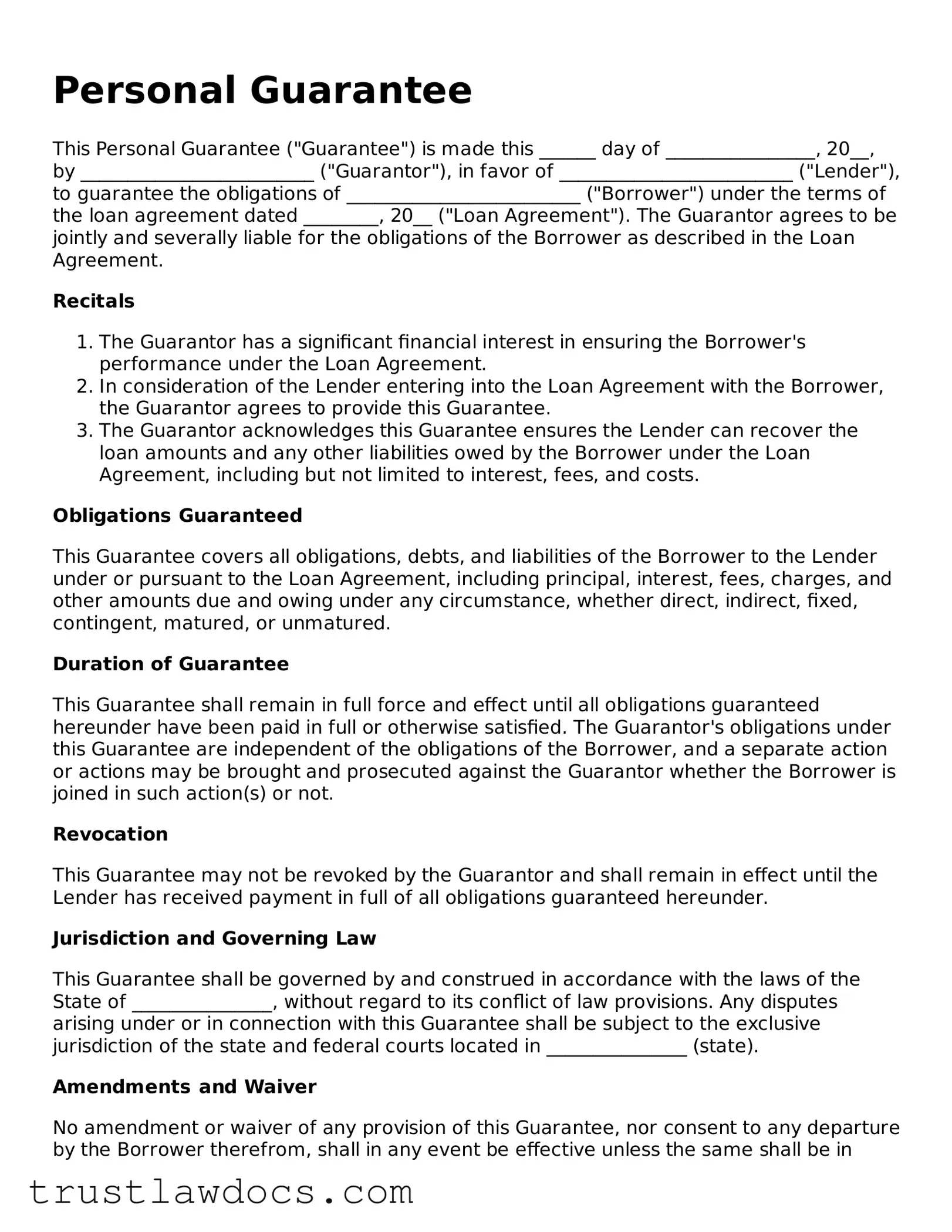Personal Guarantee
This Personal Guarantee ("Guarantee") is made this ______ day of ________________, 20__, by _________________________ ("Guarantor"), in favor of _________________________ ("Lender"), to guarantee the obligations of _________________________ ("Borrower") under the terms of the loan agreement dated ________, 20__ ("Loan Agreement"). The Guarantor agrees to be jointly and severally liable for the obligations of the Borrower as described in the Loan Agreement.
Recitals
- The Guarantor has a significant financial interest in ensuring the Borrower's performance under the Loan Agreement.
- In consideration of the Lender entering into the Loan Agreement with the Borrower, the Guarantor agrees to provide this Guarantee.
- The Guarantor acknowledges this Guarantee ensures the Lender can recover the loan amounts and any other liabilities owed by the Borrower under the Loan Agreement, including but not limited to interest, fees, and costs.
Obligations Guaranteed
This Guarantee covers all obligations, debts, and liabilities of the Borrower to the Lender under or pursuant to the Loan Agreement, including principal, interest, fees, charges, and other amounts due and owing under any circumstance, whether direct, indirect, fixed, contingent, matured, or unmatured.
Duration of Guarantee
This Guarantee shall remain in full force and effect until all obligations guaranteed hereunder have been paid in full or otherwise satisfied. The Guarantor's obligations under this Guarantee are independent of the obligations of the Borrower, and a separate action or actions may be brought and prosecuted against the Guarantor whether the Borrower is joined in such action(s) or not.
Revocation
This Guarantee may not be revoked by the Guarantor and shall remain in effect until the Lender has received payment in full of all obligations guaranteed hereunder.
Jurisdiction and Governing Law
This Guarantee shall be governed by and construed in accordance with the laws of the State of _______________, without regard to its conflict of law provisions. Any disputes arising under or in connection with this Guarantee shall be subject to the exclusive jurisdiction of the state and federal courts located in _______________ (state).
Amendments and Waiver
No amendment or waiver of any provision of this Guarantee, nor consent to any departure by the Borrower therefrom, shall in any event be effective unless the same shall be in writing and signed by the Lender, and then such waiver or consent shall be effective only in the specified instance and for the purpose for which given.
Successors and Assigns
This Guarantee binds and inures to the benefit of the parties and their respective successors and permitted assigns. The Guarantor may not assign this Guarantee or any rights or obligations hereunder without the prior written consent of the Lender.
IN WITNESS WHEREOF, the Guarantor has executed this Personal Guarantee as of the date first written above.
__________________________________
Guarantor's Signature
__________________________________
Guarantor's Name (Printed)
__________________________________
Address
__________________________________
Date
